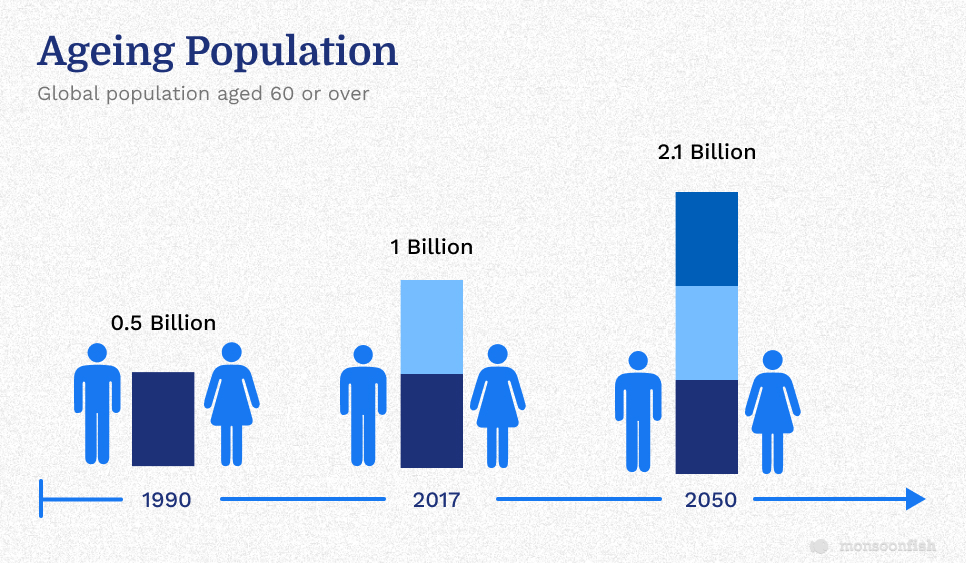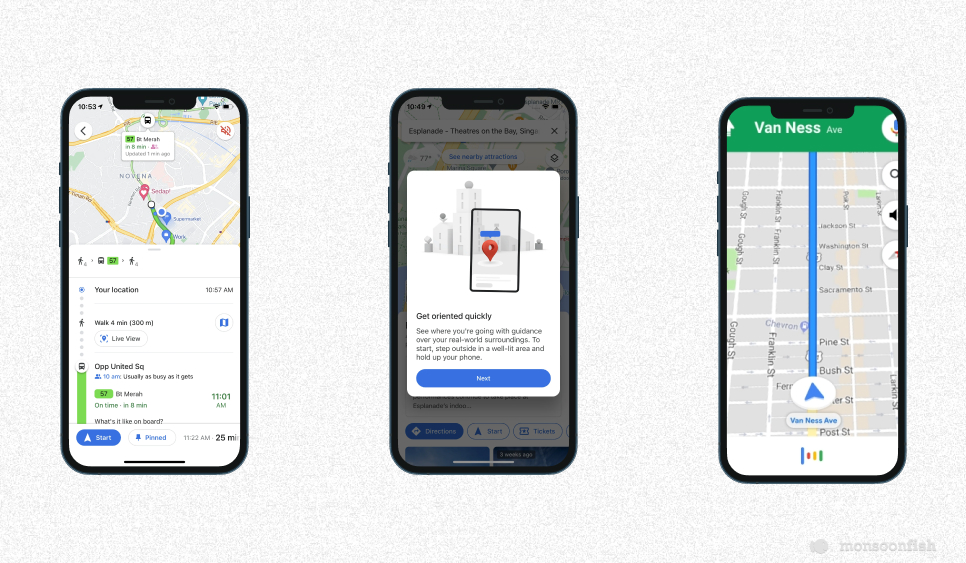Schedule a free consultation session with our design expert.
How to Delight Your Customers with Age Inclusive Design
One often overlooked demographic is older adults, who represent a rapidly growing market with unique needs and preferences. Age inclusive design is the key to unlocking the potential of this market, and delighting your customers in the process.

Designers and marketers have long focused on creating products and services that appeal to specific age groups, such as millennials, GenZ or boomers. As the world becomes more diverse and inclusive, businesses must adapt to cater to a wider range of customers. One often overlooked demographic is older adults, who represent a rapidly growing market with unique needs and preferences. Age inclusive design is the key to unlocking the potential of this market, and delighting your customers in the process. In this blog, we’ll explore what age inclusive design is, why it matters, and how you can implement it to create a better customer experience for everyone. Get ready to discover the power of design that transcends age!
What is Age Inclusive Design?
Age-inclusive design is an approach to product and service design that aims to create products and services that can be used by people of all ages, including older adults. This design approach takes into account the diverse needs and abilities of people at different stages of life, including physical, cognitive, and sensory changes that may occur with aging. Age-inclusive design seeks to create products and services that are accessible, intuitive, and easy to use, regardless of a person’s age or abilities. This approach can help companies to reach a wider range of customers, including older adults who have significant purchasing power, and to create products that are truly inclusive.
Why Age Inclusive Design is Important
Age-inclusive design has become increasingly important due to demographic changes. The global population is aging, with the number of people aged 60 or older expected to double by 2050. At the same time, people are staying active and engaged in later life, which means that they have different needs and expectations than previous generations. Age-inclusive design can help companies to attract and retain customers of all ages, including older adults, who have significant purchasing power. As the world’s population ages, businesses must learn to cater to the needs and preferences of older consumers. Age inclusive design, also known as universal design, is a design philosophy that seeks to create products and services that are accessible and enjoyable for people of all ages and abilities. By implementing age inclusive design principles, businesses can not only meet the needs of older customers but also delight them with thoughtful and intuitive designs.

Design Principles for Age Inclusive Design
Designing products and services that are age-inclusive requires a shift in thinking from the traditional approach of designing for a specific age group, while keeping some design principles to keep in mind:
- Use Clear and Readable Fonts
As people age, their eyesight may deteriorate, making it harder to read small fonts. Designers should choose clear, readable fonts that are easy to read, even at small sizes. Sans-serif fonts, such as Helvetica or Montserrat, are often easier to read than serif fonts, such as Times New Roman.
- Provide Adequate Contrast
Contrast is important for people of all ages, but it is particularly important for older adults who may have trouble distinguishing between colors. Designers should ensure that there is sufficient contrast between text and background colors, as well as between different elements of the design.
- Keep Navigation Simple
Navigation should be simple and intuitive, with clear labeling and easy-to-use menus. This is especially important for older adults who may not be as familiar with technology and may have difficulty navigating complex interfaces.
- Ensure Accessibility
Age-inclusive design should also be accessible to people with disabilities. This includes designing for screen readers and providing captions and transcripts for videos.
Real-World Examples of Age Inclusive Design
- Apple Watch
The Apple Watch is designed with age-inclusivity in mind. With an interface that is simple and intuitive, having large, easy-to-read fonts and clear icons. The watch also includes features such as fall detection and heart rate monitoring, which are useful for people of all ages.

- Fitbit
Fitbit is a fitness tracking device that has been designed with age-inclusivity in mind. The device is simple and easy to use, with a large display that is easy to read; with features such as heart rate monitoring and step tracking, which are useful for people of all ages.
- Amazon Echo
The Amazon Echo is a voice-activated assistant that has been designed with age-inclusivity in mind. The device can be controlled by voice, making it easy to use for people with limited mobility or dexterity. It can also be used to set reminders and make phone calls, which can be useful for older adults who may have memory or hearing difficulties.
- Google Maps
Google Maps is a navigation app that has been designed with age-inclusivity in mind. The app includes features such as voice-guided navigation, which can be helpful for people with visual impairments or limited mobility. It also includes information about public transportation and walking directions, which can be useful for older adults who may not be able to drive.

Creating a Customer Experience that Transcends Generations
Age-inclusive design is becoming increasingly important as the population ages and people stay active and engaged in later life. In today’s world, inclusivity is no longer just a buzzword, it’s a business imperative. Age inclusive design is a powerful tool for creating a customer experience that delights people of all ages, and sets your business apart. By considering the unique needs and preferences of older adults, you can create products and services that are more accessible, intuitive, and enjoyable for everyone. So why wait? Start designing with inclusivity in mind, and watch your customer base grow and thrive. Remember, when it comes to design, age is just a number!
By implementing age inclusive design principles, businesses can not only cater to the needs of older customers but also create products and services that are enjoyable and easy to use for people of all ages and abilities. Investing in age inclusive design can lead to increased customer satisfaction, loyalty, and ultimately, business success.
CATEGORIES





